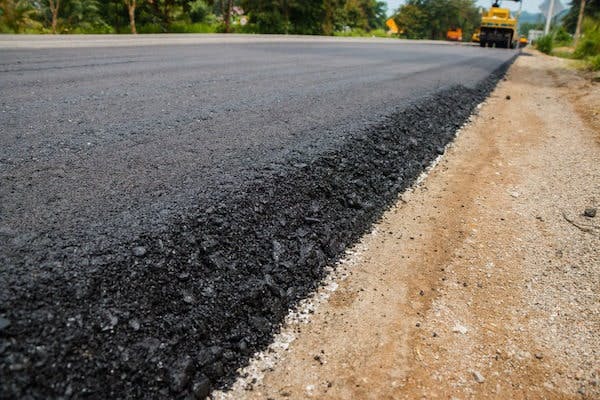Opening the Keys of Warm Mix Asphalt Modern Technology
Exploring the depths of hot mix asphalt technology reveals a world where precise processes and accurate formulas converge to form our roadways and framework. The blend of accumulations, fillers, and binders isn't just a building and construction job yet a critical orchestration of durability and efficiency. As we peer right into the detailed dance of elements, a tapestry of durability and sustainability unfolds. But what exists underneath this surface of asphaltic mastery, and what secrets wait to be introduced in the world of leading technologies?
Relevance of Hot Mix Asphalt
Warm Mix Asphalt plays a critical function in modern-day facilities growth because of its durability and cost-effectiveness. As the most typically made use of paving product for roads, highways, and car park, Warm Mix Asphalt provides an array of advantages that add to its importance in building tasks. One essential benefit is its capacity to endure rush hour loads and extreme weather conditions, giving a long-lasting and trustworthy surface area for transport networks. Additionally, Hot Mix Asphalt is cost-effective in both preliminary building and construction and long-term maintenance, making it a favored option for several framework jobs.
The toughness of Hot Mix Asphalt stems from its composition, which consists of aggregates, binder, and filler products that are very carefully selected and blended to satisfy specific efficiency demands. In general, the importance of Warm Mix Asphalt in infrastructure advancement can not be downplayed, as it proceeds to be a foundation of modern building and construction practices.
Elements of Asphalt Mixes
The composition of asphalt mixes is composed of meticulously selected aggregates, binder, and filler products that are critical for achieving particular efficiency needs. Accumulations are the primary component of asphalt blends, providing stamina and stability. The binder, normally asphalt or asphalt concrete, holds the aggregates together and offers versatility and toughness to the mix.
The combination and percentage of these elements play a substantial duty in determining the quality and performance of the asphalt mix. Engineers thoroughly develop the mix to satisfy specific requirements, considering elements like web traffic volume, climate conditions, and pavement lifespan. Correct option and balancing of aggregates, binder, and fillers are essential for creating durable, long-lasting asphalt sidewalks.
Combining and Manufacturing Methods
:max_bytes(150000):strip_icc()/low-section-of-man-working-758486719-59da6d0a054ad90010617854.jpg)
When the accumulations are chosen, the binder, usually asphalt concrete, is included to bind the products with each other. The binder's quality and quantity considerably influence the mix's flexibility, stamina, and resistance to environmental variables. Additionally, fillers like hydrated lime or Portland concrete might be included to improve certain attributes of the asphalt mix, such as its workability or wetness resistance.
During production, the aggregates and binder Discover More are warmed, typically in between 250-325 ° F(121-163 ° C ), to promote blending and guarantee proper covering of the accumulations. The blending process should be comprehensive to achieve an uniform blend that promotes the desired performance features of the asphalt. Different methods, such as batch blending or drum mixing, are used to accomplish constant and top quality asphalt mixes for construction tasks.
Elements Affecting Asphalt Efficiency
Elements affecting asphalt performance encompass a variety of variables that affect the resilience, long life, and general quality of asphalt pavements. One key variable is the high quality of products utilized in the asphalt mix. The kind and source of accumulations, the binder high quality, and the ingredients all play a considerable role in figuring out the performance of the asphalt sidewalk. The rank of aggregates is crucial as it impacts the mix's workability, resistance, and stability to rutting and fracturing.

Environmental problems likewise affect asphalt efficiency. Temperature variants, moisture seepage, and web traffic loads can all influence the structural honesty of the pavement. Layout considerations, such as sidewalk thickness and water drainage, are important in making certain the long-lasting efficiency of the asphalt pavement. By very carefully considering these aspects, designers and specialists can enhance asphalt efficiency and improve the life span of sidewalks.
Sustainable Practices in Asphalt Technology

Furthermore, the development of warm-mix asphalt (WMA) technologies has gained grip over the last few years. WMA enables for the production and placement of asphalt blends at reduced temperatures compared to typical hot-mix asphalt, causing minimized energy consumption and greenhouse gas exhausts. The use of permeable asphalt mixes can aid alleviate stormwater runoff concerns by enabling water to infiltrate via the pavement and right into the ground, promoting all-natural water filtering and recharge processes. By applying these sustainable practices, the asphalt sector can contribute to constructing a much more eco-friendly and resistant infrastructure network.
Final Thought
In conclusion, hot mix asphalt modern technology plays a crucial function in contemporary framework growth due to its sturdiness and cost-effectiveness. By meticulously stabilizing parts, employing proper mixing strategies, and thinking about different variables, designers can develop high-quality asphalt mixes that withstand heavy traffic loads and severe climate condition. Embracing sustainable practices, such as using recycled materials and warm-mix technologies, better boosts the ecological kindness of asphalt innovation.
Blending and production techniques in warm mix asphalt modern technology include the exact combination and processing of accumulations, binder, and fillers to produce a resilient and high-performance asphalt mix.Elements influencing asphalt efficiency incorporate a range of variables that impact the sturdiness, long life, and overall quality of asphalt pavements. Sustainable practices in asphalt modern technology incorporate different initiatives intended at decreasing the environmental influence of asphalt production and paving procedures. By integrating reclaimed asphalt sidewalk (RAP) and recycled asphalt roof click reference shingles (RAS) into brand-new asphalt mixes, the sector can dramatically minimize the consumption of raw products and energy, while additionally decreasing land fill waste.
WMA enables for the manufacturing and placement of asphalt blends at lower temperature levels compared to typical hot-mix asphalt, resulting in decreased power consumption and greenhouse gas exhausts.